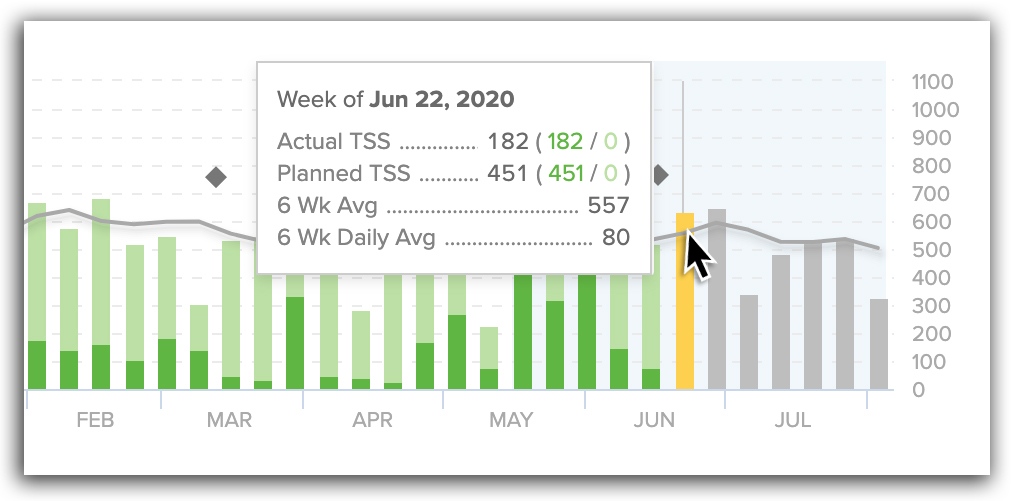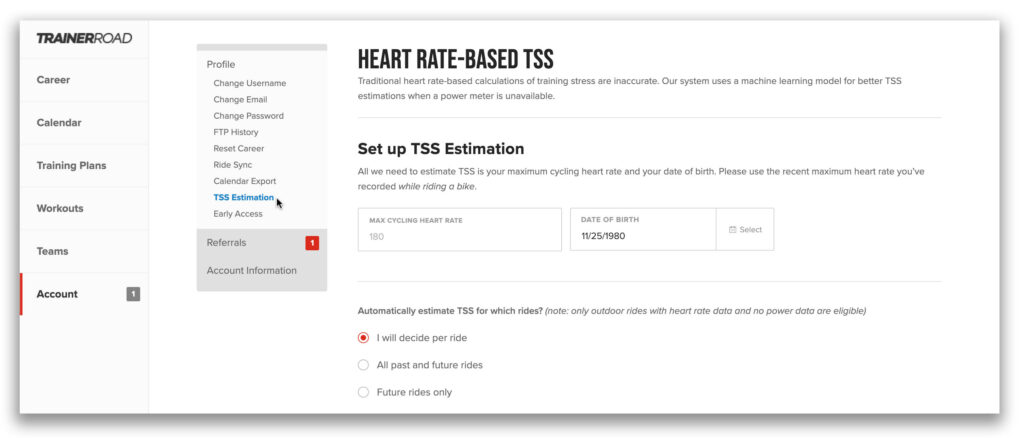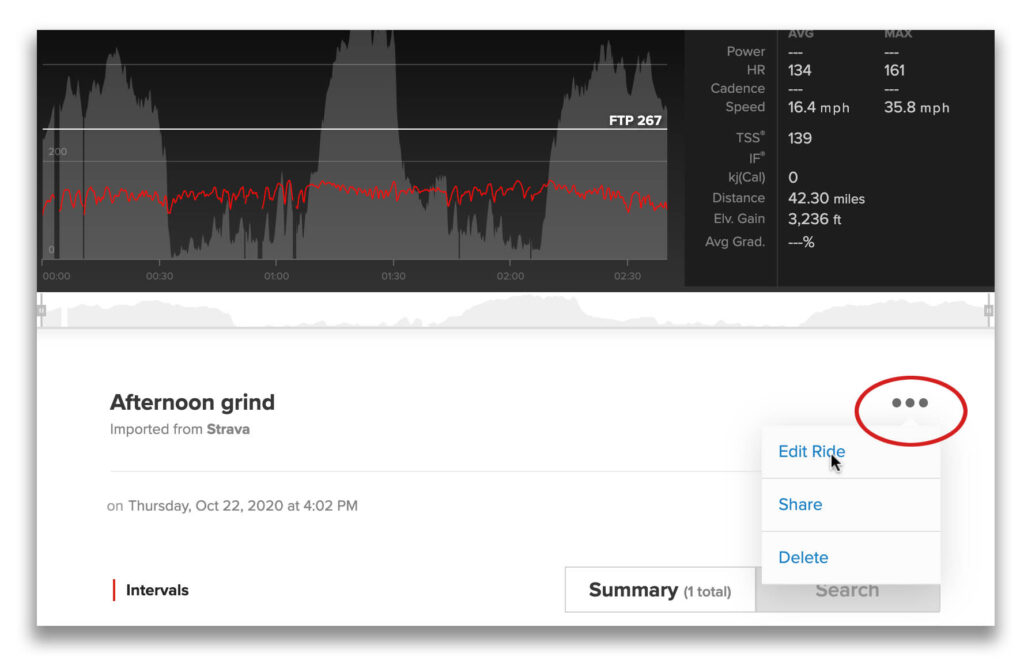Machine Learning-Based TSS Estimation for Rides Without Power Data
Track all the hard work you put into your training— even when riding without a power meter. TrainerRoad’s new and improved TSS estimation uses machine learning to calculate TSS for outside rides without power meters more accurately than RPE-based estimates.
Track and Understand ALL of Your Training
There’s nothing as insightful as power data for tracking your training. Unfortunately, few of us are lucky enough to have a power meter for every ride. And when you find yourself riding without power, it can almost feel like your training doesn’t count, like you won’t get full credit for all your hard work.
Machine learning-based TSS estimation is a powerful new solution to this common problem, and all you need to make it work is an inexpensive heart rate monitor. Using an advanced algorithm derived from the most extensive dataset in cycling, it’s far more nuanced and accurate than traditional heart rate or rate of perceived exertion (RPE)- based TSS calculations. Now, you can easily track training stress across all your rides for a fuller picture of your training.
Training Stress for Every Ride
Training Stress Score (TSS) is one of the most useful and common metrics in cycling. While no metric captures every detail of training, TSS is an excellent way to monitor trends over time. It’s prominently displayed for each TrainerRoad workout, as well as in the Training Stress graph.

TSS is straightforward and simple to understand, but since it’s power-based, outdoor rides without power data can throw things off. In the past, TrainerRoad has let you estimate TSS for these rides based on RPE (rate of perceived exertion), but this doesn’t always match the actual physical toll of your efforts. Formulas for calculating TSS from heart rate also exist, but these tend to be inaccurate and highly variable from athlete to athlete. If you train on multiple bikes and don’t always have access to power, there simply hasn’t been a good solution.
TrainerRoad’s new machine learning-based TSS estimation goes far beyond RPE or simple mathematical calculations and offers accuracy second only to actual power data. Derived from hundreds of thousands of rides and incorporating multiple factors into its algorithm, it’s available now for any outside ride with heart rate data but no power meter.
How to use ML-Based TSS Estimation
TSS Estimation can be found in the Account tab on Trainerroad.com. Once activated via the web, estimated TSS values will automatically sync to the latest versions of TrainerRoad’s desktop and mobile apps.
To turn it on, sign in to Trainerroad.com, click Account, then click TSS Estimation from the Profile menu. From here, enter your date of birth and your recent maximum cycling heart rate. (If you’re unsure of your max HR, use the value reached during your most recent Ramp Test.)

Next, specify which rides you’d like to apply Estimated TSS to. You have 3 options:
-
I will decide per ride – Each time you complete a ride with heart rate but without power data, you’ll receive an alert on your career page. Clicking it will allow you to estimate TSS for the ride, with your choice of a traditional RPE estimate or the new ML-based estimation.
-
All Past and Future Rides – Estimated TSS will automatically be applied to any outdoor rides with heart rate but no power data or existing TSS estimate, retroactively and in the future. Note: Past rides for which you’ve already entered a manual or RPE-Based TSS estimate will not be automatically affected. Please allow for up to an hour for past rides to be updated with estimated TSS values.
- Future Rides Only – Estimated TSS will be applied automatically to any outdoor ride in the future with heart rate but no power data.
Whichever method you choose, you can adjust estimated TSS for past rides at any time. Click the 3 dots next to the workout title on a ride’s detail page (emphasized below with a red circle), and choose Edit Ride. From here you can toggle between the new Heart Rate/ ML-Based and traditional RPE-based calculations, and you can even manually enter a new TSS value if you prefer.

ML-Based TSS Estimation FAQ
Q: How does ML-based TSS estimation help make me faster?
A: Many athletes use TSS to track their training and stay consistent. By receiving a more accurate TSS estimate for every ride, you get a better picture of your training load and get credit for all your hard work, even when you ride outside without a power meter.
Q: How does ML-based TSS estimation work?
A: Traditional RPE or heart rate-based TSS estimations use simple mathematical formulas. Our system uses a much more nuanced machine learning model, incorporating multiple variables from your ride and derived from an analysis of hundreds of thousands of workouts.
Q: But wait— isn’t heart rate an imprecise and subjective way to train?
A: Heart rate is a lagging indicator, and on its own, it can be an unreliable way to guide workouts. Our machine learning model incorporates thousands of real rides to take this subjectivity into account. While heart rate is still an imperfect way to structure training, ML-based TSS is an effective supplemental tool to track training stress alongside rides with power data.
Q: How Accurate is ML-based TSS estimation?
A: No TSS estimate is perfectly accurate. However, data shows our ML-Based system is significantly more accurate than existing heart rate or RPE-based formulas, and second only to power-based TSS. Estimates are more accurate for shorter workouts; for very long rides the margin of error increases. For rides of an hour or less, the majority of estimates fall within +/- 7 TSS of power-based metrics; for rides of one to two hours, most results fall within +/- 13 TSS.
Q: Does the feature work with all heart rate monitors?
A: Any heart rate monitor currently compatible with TrainerRoad works with ML-based TSS estimation. Note that some heart rate monitors may be more accurate than others, and the accuracy of the TSS estimate can be influenced by the quality of your heart rate monitor’s data.
Q: Can ML-Based TSS estimation be used for sports other than cycling?
A: Currently, the feature is only designed to be used for cycling.
Q: I’m in the Adaptive Training Beta. Does this TSS estimate influence Adaptive Training’s workout recommendations or Progression Levels?
A: No. Adaptive Training currently only references power data.
TSS is a trademark of Peaksware, LLC and is used with permission. Learn more at www.trainingpeaks.com
